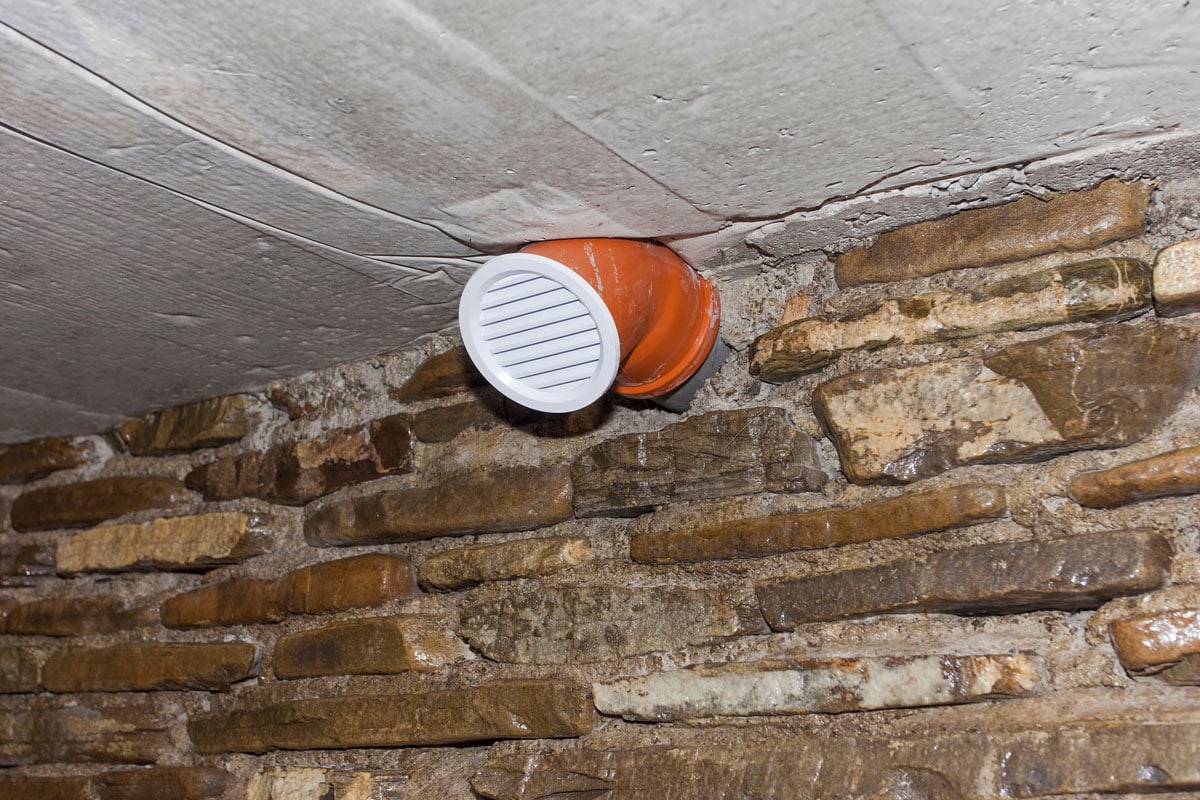Vents allow outdoor air to circulate in the basement, hindering moisture build-up that would otherwise promote rot and mildew growth. But should you close basement vents in the summer? We researched the topic, and this is what we discovered.
You can close the basement vents in summer to lower your cooling costs. However, it is recommended to close the vents intermittently to protect the air ducts and your HVAC system from costly damage.
Keep reading to find out some of the effects of closing basement vents in the summer. We will also tackle how to ventilate a basement and whether basements need cold air returns.

Should You Open or Close Basement Vents in the Summer?
High energy bills have us racking our brains on how best to minimize our energy consumption. You may consider closing some vents that regulate temperatures throughout your home, especially those in spaces not used frequently.

Benefits
You can close basement vents in summer to minimize expenditure on cooling. If you rarely use the basement, shutting the vents will save energy by avoiding regulating temperatures in a space that is not in use.
However, you should proceed with caution when deciding to close the vents to protect your air ducts from extensive damage and avoid air blockage.
Drawbacks
Because the cooling system is designed to meet the needs of your home, the quantity of air that the blower fan can move befits your home's size and ventilation flow rate. Thus, changes in indoor pressure can have adverse effects on your HVAC system.
If you close the vents for long or shut too many of them, you may create more problems than solutions.
Where the AC has a same-rate motor that does not self-adjust depending on the indoor pressure, the pressure would build up in the air ducts, causing them to leak. Leaking results in higher energy bills as it limits the flow of conditioned air in your home and creates an uncomfortable living space.
While reduced air circulation would not be an issue in a system fitted with a variable speed motor, the unit would still need to compensate for the decrease in airflow. As the appliance overworks, wear and tear increase. As a result, the AC breaks down frequently, increasing repair and maintenance costs.
Closing the vents also reduces the speed at which your AC cools your home. Because cool air moves into the room at a lower rate, your AC has extended on cycles. The longer AC cycles increase energy consumption.
Closing the vents may be suitable for reducing energy consumption but not redirecting the cool air to the rest of the home. Other rooms in the house do not receive the air that would otherwise have been used to condition basement temperatures.
Furthermore, considering that basements often have a lower temperature than the rest of the house during summer, closing the basement vents hinders you from using the cold basement air to regulate temperatures in the rest of the house.
Read this article to learn "How To Get Cold Air From Basement Upstairs."
How To Ventilate a Basement

Properly ventilating your basement protects it from moisture problems and mold build-up and eliminates foul odors.
You can opt for natural methods, portable ways, or mechanical techniques to remove moist, contaminated air and let fresh, clean air into the basement.
Natural Ventilation
Natural ventilation only works in basements with windows. The windows should be strategically placed facing each other across the basement space. That way, you use natural air currents to aerate the basement and get rid of polluted air.
Although the method is the easiest and most cost-effective to operate, its efficiency is dependent on the frequency of opening the windows and the number of inlets and outlets available. The more you replace indoor air with fresh outdoor air, the more effective the ventilation.
However, the method is not as efficient in a humid basement. You would need to supplement natural ventilation by installing a dehumidifier to counter the higher relative humidity levels.
Portable Ventilation
Portable ventilation offers an economical and trouble-free solution to ventilating your basement. This method is suitable for basements that lack windows or when you cannot open the windows.
An air purifier, also known as a portable ventilation machine, can easily clean air without depending on your home's structural layout. The device draws air from the basement and runs it through filters to remove contaminants such as dust, allergens, mildew, and molds.
The constant air movement keeps it from being stale, minimizing the chances for bacteria and mold to attach to the surface and build up.
It is wise to pick a unit whose air purifying capacity is proportionate to the basement size. In addition, regularly changing its filters will keep it in optimal working condition longer. That way, your basement air stays clean and fresh.
This air purifier is suitable for a large home. It has a washable pre-filter suitable to remove large particles such as lint and fur.
Mechanical Ventilation
Mechanical ventilation employs vents and fans to get rid of polluted basement air and replace it with fresh outdoor air. Although the method still uses openings or existing windows for ventilation, it is more efficient than natural ventilation since it creates mechanical circulation rather than depending on natural currents.
Of the three alternatives, mechanical ventilation is the most expensive to install. It requires that you purchase a mechanized device and have it professionally installed to work correctly. However, the method is more advantageous as you can use it in a relatively humid basement to control moisture.
The size of your basement will determine which appliance will best serve it. A ventilation fan on one window and an exhaust fan on the other will be sufficient in most small to moderately sized basements.
You can also install an exhaust fan along with a ventilation pipe. The exhaust fan pulls air from the basement and expels it to the outside via the ventilation pipe. That way, the contaminated basement air is replaced with fresh outdoor air.
Keep the fans and ventilation pipes clean to enhance air circulation. In addition, opt for ventilation fans that have a humidity sensor for system automation. Thus, when the relative humidity in the basement rises above a pre-determined level, the fans will come on and run until the moisture content falls.
Mounting a window AC on a basement window or installing a portable air conditioner can also help ventilate the basement. Furthermore, the AC offers cooling comfort in addition to enhancing air circulation.
This exhaust ventilation fan has a strong motor that features a permanently lubricated bearing. It operates quietly and does not require maintenance.
Do Basements Need Cold Air Returns?

Cold air returns take in air from your home's indoor space and use it in the AC system. For this reason, it is necessary to install cold air returns in the basement to enhance proper air circulation. When there is adequate airflow in the home, you can maintain all the rooms at the same temperature.
The cold air returns maintain air pressure, filter out large debris, and enhance the efficient operation of an HVAC system. They are often found on a wall close to a ceiling, on the floor in older homes, or close to the ground.
The cold air returns in the basement should be installed on the floor to counter air density which favors hot air rising. This way, you can raise the temperature in the basement since the warm air will be drawn down from the ceiling.
If the return is installed close to the ceiling, the return vent would draw hot air from the top of the duct and take it back to the furnace while not altering the cold air temperature at the bottom.
Do not draw cold air from the same room as the furnace to avoid back-drafting the chimney. In addition, ensure that the cold air return in the basement is half as large as the sum of all the hot air outlets. This size keeps the basement from coming under negative pressure, which would cause back-drafting.
Ensure that the cold air returns remain clear of any kinds of blockages. Avoid covering them with drapes, rugs, or curtains. In addition, keep couches and other furniture pieces at least 10 inches away from the return vents.
In Closing

While you can close the basement vents in the summer to reduce energy consumption, you should only do this from time to time to protect your AC system from costly leaks. Furthermore, leave a few basement vents open rather than closing all of them.
You can use natural techniques, portable methods, or mechanical ways to keep air moving in the basement. Portable methods are more economical and easy to implement since they do not depend on the openings such as windows in the basement for their effectiveness.
Dive in to discover: Can You Tap Into Existing Ductwork For Basement Heat


